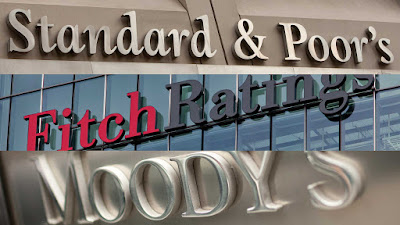Protecting Against Credit Rating Agency Transgression in the CLO Market
In today’s post we will look at recent calls for more action
in the field of credit rating reform, and also some solutions that have been
advanced by commentators from the field – our friends at the Expect[ed] Loss blog in particular.
Recent calls from the Senate have reignited the discussion and debate regarding
credit rating reform, but there are potentially much more deep-rooted questions
that need to be asked.
As reported last week by Cezary Podkul of The Wall Street Journal, a number of
Congressmen have taken the option of pressing the SEC on why
more has not been done regarding the inherent conflicts of interests that
plague the credit rating marketplace. This is not the first time that this
request has been made of the SEC, with a number of academics and former
practitioners urging the SEC in November 2019 to ‘finally
end the industry’s “issuer pays” business model’. The panel, however, did
not promote an alternative model, and industry-insiders have been staunch
defenders of the model. Nevertheless, the letter
sent by Senators Wicker, Whitehouse, Grassley, and Kennedy on the 3rd
February is rather clear. In the letter the Senators cite recent Wall Street Journal articles that
confirm that the six largest rating agencies altered their rating criteria ‘in
ways that were followed by big jumps in market shares in some sectors –
particularly in sub-segments of commercial mortgage backed-securities and collateralised
loan obligations’. The senators take aim at the SEC’s approach in the aftermath
of the Crisis, which was to focus on the development of unsolicited ratings as
one major cure for the inherent conflicts of interests, and how associated
pressures are applied, within the credit rating arena – the senators note that
the SEC themselves found that, as a result of their focus on unsolicited ratings,
‘competition has not increased, as unsolicited ratings remain uneconomical…
there is limited willingness to pay for them’. The senators do appreciate that
the SEC has at least attempted to raise the issue of the remuneration model,
but that ultimately ‘the failure of other mechanisms to curb conflicts of
interests, like the issuance of unsolicited credit ratings, indicates that
another path forward should be considered’. Furthermore other legislators, like
Rep. Brad Sherman, have confirmed they will now be turning
their attention to the actual business model of the agencies. In terms of
mitigating this particular issue, our friends at Expect[ed] Loss recently covered this issue, particularly
in relation to CLOs and their potential impact.
One of the ways in which the conflict of interest that is
inherent to the issuer-pays system could be alleviated, is by allowing either
rating agencies who utilise investor-pays, or indeed non-registered entities,
access to the same information the issuer-pays rating agencies have. The
article discusses how the SEC could mandate that all companies that borrow on
the leveraged loan market must file their 10-Q and 10-K statements on the EDGAR
system, which would allow independent firms access to that data. Additionally,
the posting of information like loan portfolios and details of their capital
structures onto a system like EDGAR would mean that they would then be
regulated as public securities, not private securities – the sentiment being
this would add extra protection to what may be a particularly impactful collapse
of a bubble, if a bubble were to materialise. For the CLO market this seems
wise, but this does remind me of a system that already exists, but which has
failed miserably. In an article in 2018, I
wrote about a system known as the ‘17g-5 Program’ which was developed to
allow the sharing of information outside of the relationship between issuer and
rating agency. The concept is that this would allow non-hired rating firms to
both provide an alternative rating for the market which may, if factors
conspired, become a benchmark with which to compare the predominant rating
agency, and also allow that non-hired firm to gain the reputation needed to
break the oligopolistic barrier. What we found was that none of this happened,
because non-hired firms are simply not incentivised enough to conduct such
ratings, at cost, with no recompense – the carrot of gaining reputation within
a natural oligopoly is not a particularly strong one. So, extrapolating out
from this, the suggestion regarding the extra monitoring, based on
transparency, within the CLO marketplace is a just suggestion, but in practice
it will take non-hired entities to be incentivised properly to fulfil that
role. In theory the system, both with respect to the one called for in the CLO
market and the 17g-5 Program, is a progressive and potentially very valuable
tool in the name of reducing the negative impact of the issuer-pays model.
However in reality, as if often the case in the credit rating world, it is not
that simple. There needs to be quite the incentive for an outsider entity to
produce work for free, and that incentive is hard to conceptualise. It was for
this reason that I suggested that a number of non-profit rating agencies come
together to fulfil the role and reduce the commercial aspect of the role – but,
the non-profit entities like INCRA and the CRI cited in my article have found
it particularly difficult to grow in the rating climate. One assumes that there
will be other initiatives, and calls, to reduce or remove the issuer-pays
system but, quite frankly, it is here to stay and, along with it, are the conflicts
of interests that are inherently
associated with it.
Keywords – credit rating, CLO, business, issuer-pays, @finregmatters





Comments
Post a Comment